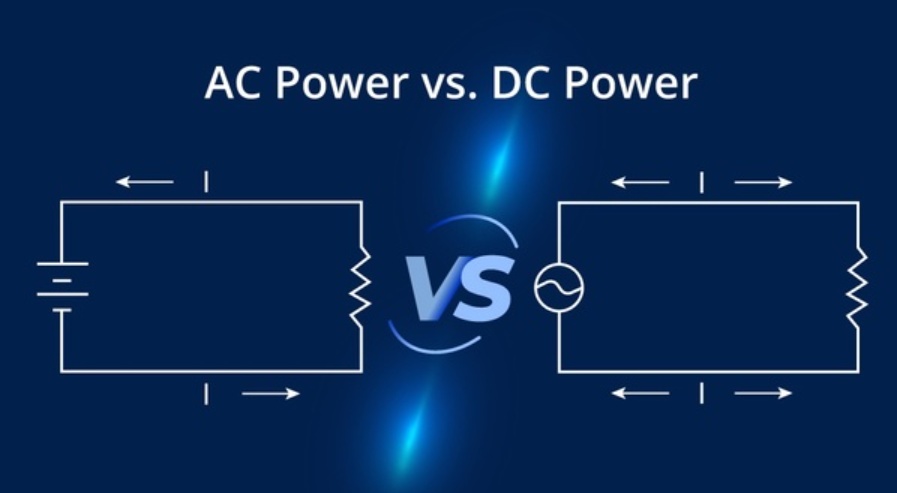AC and DC Current: AC (Alternating Current) and DC (Direct Current) are the two fundamental forms of electrical current, differing in how electricity flows through a circuit. Understanding this distinction is crucial in various aspects of our daily lives, from powering our homes to understanding electronic devices.
Direct Current (DC):
Imagine a steady stream of water flowing through a pipe in one direction. In DC circuits, electrons flow in a single, constant direction. This unidirectional flow is often compared to batteries, where chemical reactions create a constant voltage that pushes electrons through the circuit. Solar panels also generate DC electricity, as the sunlight hitting the panels knocks electrons loose, causing them to flow in a particular direction.
Alternating Current (AC):
Now picture that water flow rapidly changing direction, switching back and forth. This is analogous to AC, where electrons constantly reverse their direction within the circuit. This creates a constantly fluctuating voltage and current, with the direction and strength of the flow periodically changing. AC is the type of electricity delivered through power outlets in homes and businesses. Power grids primarily transmit electricity in AC form because it experiences lower energy losses over long distances compared to DC.

Source: Quora
Here's a table summarizing the key differences:
Feature | Direct Current (DC) | Alternating Current (AC) |
| Electron Flow Direction | Single, constant | Continuously changing |
| Voltage | Constant | Fluctuates (positive & negative) |
| Analogy | Steady water flow | Rapidly changing water flow |
| Example | Batteries, solar panels | Power outlets, power grids |
Additional Points:
- Applications: Due to its constant voltage, DC is often used in electronic devices like laptops and smartphones. However, these devices typically use AC power from the wall outlet, which is then converted to DC using a rectifier within the device.
- Conversion: Devices called rectifiers can convert AC to DC, while inverters can convert DC to AC. This conversion plays a vital role in various applications, such as charging laptops with AC power or using solar panels (DC source) to power homes (which use AC appliances).
In conclusion, understanding the distinction between AC and DC is fundamental for comprehending how electricity functions in our world. From the constant flow of electrons in batteries to the ever-changing flow in power lines, both AC and DC play crucial roles in powering our lives.
Comments
All Comments (0)
Join the conversation